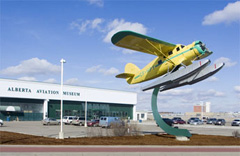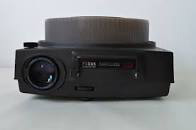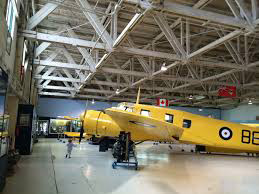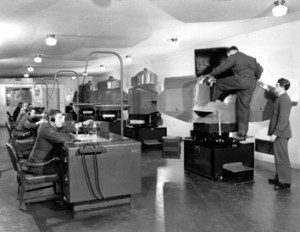
It was just a few minutes to go. Danielle Metcalfe-Chenail, the author with whom I was sharing MC-ing duties (last Friday night), and I, were trying to organize visuals for our combined presentation about historic aviation moments. We were about to co-host the launch of the LitFest 2014: Edmonton’s annual non-fiction festival. The audience was all seated in the venue now, the Alberta Aviation Museum. She tried to get all our images to register on her computer. I tried to get them to register on mine. But we couldn’t get one laptop to talk to the other.
“It’s just a Mac-PC thing, I guess,” she said.
She was right. Her personal computer and my laptop were apparently not compatible. It’s just the modern reality when two rival computing giants cannot (because of distinctly different technology) or will not (because of intense corporate chauvinism) get along. Eventually, however, we managed to skirt the electronic problems that each computing system threw up against the other, and we merged the two files of pictures we wanted to project on a viewing screen in front of the audience. The show went on as planned.
And I thought about how far visual aids for presentations like these have come – from sketches on flip charts to 35-millimetre slide projectors to VHS video cassettes to power points and holograms. Back in the 1970s, when I first stood in front of audiences with stories about some of my historical research, I thought I was way ahead of the curve by blowing up my photographs and mounting them on cards about the size of a cue card.

Then, in the 1990s, I got together with professional photographer Terry Paul and we took pictures of the photographs to make what were known as transparencies. Then, when I went out to do presentations, instead of carrying flash cards, I packed a screen, a 35mm projector and plastic carousels full of slides.
As recently as seven years ago, I remember doing a full banquet presentation using my Kodak 650H projector, with its five-inch Ektanar lens, 80-slide carousel, and five-pin slide changer. The clicker on the end of an umbilical cable allowed me to walk about 10 or 15 feet from the projector and simply press on the button to advance the slides. It seemed pretty leading edge until one night I was speaking about the Battle at Vimy Ridge in the main dining room of the Royal Canadian Military Institute on University Avenue.
“Just before dawn the Canadians advanced,” I told the audience in the now darkened dining room. “It was H-Hour…”
Then suddenly in the darkness, an older gentleman rose from his seat. He didn’t notice my slide projector’s umbilical cord and walked straight into it, which catapulted my projector like a sling-shot stone off the table, through the air and crashing to the floor. I lunged to catch the flying projector, but missed.
Fortunately, the RCMI had another projector lying around. I was able to pop my carousel into the replacement projector and continue my talk. Miraculously, the only thing that broke in that tank of a Kodak projector of mine was the light bulb. Otherwise, I was up and running the next day at anther presentation. There’s something to be said for “sold state” visual aids, I guess.
I came into the modern world of visual aids a few years ago, and instead of carting around a Kodak carousel projector, I learned to digitize my images on a file in my laptop. Isn’t modern technology wonderful?

The irony of our hip, contemporary, power-point launch at LitFest in Edmonton, last Friday night, didn’t occur to me until later in the evening. My co-host and I had been winging our presentation, as it were, in the recently inaugurated Alberta Aviation Museum. In fact, the museum is located in what used to be an airplane hangar at the original downtown Edmonton (or Blatchford) airport. There, between August 1940 and July 1944, Canadian bush pilot Wop May led a team of aviation instructors teaching cadet volunteers from all over the world to become wartime navigators (as part of the British Commonwealth Air Training Plan).

One of the AOS teaching tools in the wartime hangar was a flight simulator, called the Link trainer. It featured a rather compact cockpit sitting on a cushion of air, allowing the pilot to gaze out the cockpit window at the horizon – a diorama painted on the wall – and use visual reference of the horizon as one means of simulating straight and level flight.
There we were, earlier in the evening trying to recreate aviation history with our sophisticated laptop computers, realizing their incompatibility. And in that very place – 70 years before – young battle-eager recruits had used a hand-painted horizon on the wall to simulate the real conditions of combat flying in 1940. There was no room for error in their use of visuals. In those times, it was fly or die.